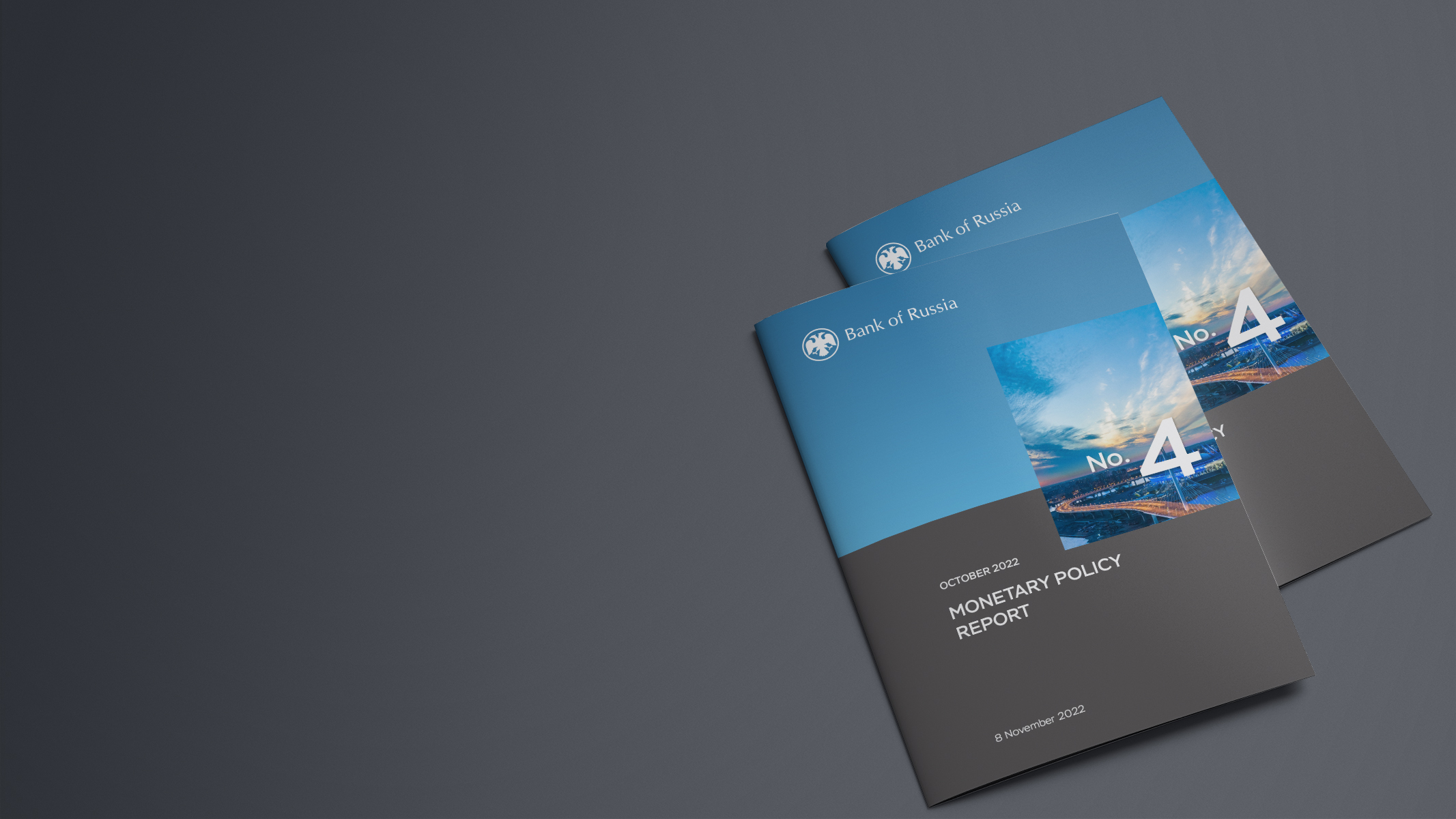In the quarterly Monetary Policy Report, in the follow up of the key rate meeting, the Bank of Russia presents its vision and assessment of the current economic situation and publishes the macroeconomic forecast underlying its key rate decisions.
Inflationary pressure remains low, but the effect of disinflationary factors weakens. The 2022 forecast has been updated to 12–13%
This year, GDP will decline by less than previously expected
Monetary conditions remained neutral overall
The Bank of Russia’s efforts are intended to bring inflation back to the target in 2024
Current inflationary pressure remains low but is expected to intensify
During summer, prices were declining. A slight acceleration of price growth in September was in part caused by one-off factors, namely higher rates in auto insurance and mobile communication. Households’ and companies’ inflation expectations were elevated and slightly increased in September—October. Before the end of this year, inflationary pressure will be up due to the preponed indexation of utility prices from the next year to December 2022. In 2023, inflation movements will be shaped by changes in the labour force size, employment structure and the speed with which companies will continue to adapt to sanctions. At the end of this year, prices will grow by
Inflation, inflation expectations and Bank of Russia key rate
GDP forecast for this year has been improved
Given the high frequency data for 2022 Q3, the Bank of Russia has improved GDP forecast: the economy will contract by
Key forecast parameters
Growth, % YoY, unless indicated otherwise
| 2021 (actual) |
2022 | 2023 | 2024 | 2025 | |
|---|---|---|---|---|---|
| Annual inflation | 8,4 | 12,0 — 13,0 | 5,0 — 7,0 | 4,0 | 4,0 |
| Gross domestic product | 4,7 | (-3,5) — (-3,0) | (-4,0) — (-1,0) | 1,5 — 2,5 | 1,5 — 2,5 |
| — % change, Q4 on Q4 of the previous year | 5,0 | (-7,8) — (-6,4) | 0,0 — 1,5 | 0,5 — 1,5 | 1,5 — 2,5 |
| Exports | 3,5 | (-16,0) — (-15,0) | (-11,5) — (-7,5) | (-3,0) — (-1,0) | 0,0 — 2,0 |
| Imports | 16,9 | (-23,5) — (-22,5) | (-3,5) — (+0,5) | 3,0 — 5,0 | 1,0 — 3,0 |
| Banking system’s claims on the economy in rubles and foreign currency, including: | 13,9 | 9 — 12 | 8 — 13 | 9 — 14 | 8 — 13 |
| ● on businesses | 10,7 | 10 — 13 | 7 — 12 | 8 — 13 | 8 — 13 |
| ● on households, including: | 22,0 | 7 — 10 | 9 — 14 | 9 — 14 | 8 — 13 |
| — housing mortgage loans | 26,7 | 14 — 17 | 10 — 15 | 10 — 15 | 10 — 15 |
Monetary conditions have remained neutral overall
However, monetary conditions have slightly toughened since the September meeting, despite the key rate reduction. The main reason was intensifying geopolitical tensions. Investors revised the estimated inflation risk premiums. Yields on the long end of the OFZ curve grew and are at the levels of the first half of May. Banks raised their deposit rates in response to the outflow of cash. Loan interest rates stopped declining, and in October, banks started to impose higher requirements on borrowers. Nonetheless, credit activity remained high in both the retail and corporate segments.
OFZ yields and Bank of Russia key rate, % p.a.
* The maximum interest rate on deposits in Russian rubles of the top ten credit institutions attracting the largest amount of households’ deposits.
Monetary policy stance aims to bring inflation back to the target in 2024
The further path of the key rate will depend on changes in the balance of risks for achieving the inflation target in 2024. Also, monetary policy will continue to take into account the need of a structural transformation of the economy. According to the baseline forecast, in 2022, the annual key rate will be 10.6% p.a. on average (this is consistent with the average value of

